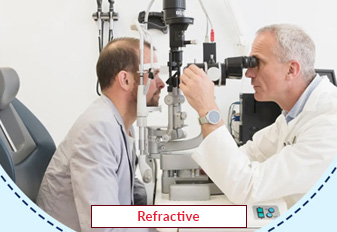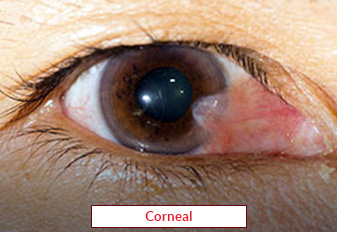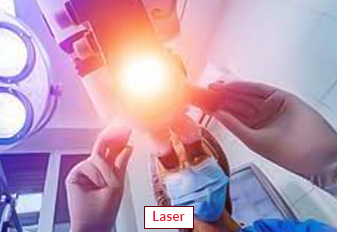Refractive Surgery

Refractive surgery is a type of eye surgery that aims to correct refractive errors, which are problems with the way the eye bends or refracts light. These errors can lead to blurry vision and difficulty seeing clearly, and they can be caused by a number of conditions, including nearsightedness, farsightedness, and astigmatism.
The goal of refractive surgery is to change the shape of the eye's cornea or lens to improve the eye's ability to focus light on the retina, which can result in clearer vision. This is achieved through various surgical techniques, including using lasers to reshape the cornea or inserting an artificial lens inside the eye.
About Refractive Surgery
Refractive surgery is a type of eye surgery that aims to correct refractive errors, which are problems with the way the eye bends or refracts light. These errors can lead to blurry vision and difficulty seeing clearly, and they can be caused by several conditions, including nearsightedness, farsightedness, and astigmatism.
Overall, refractive surgery can be a safe and effective way to correct vision problems and improve the quality of life for patients. However, it's important to discuss the risks and benefits of each procedure with an eye surgeon to determine the best treatment option for your case.
Procedure of Refractive Surgery
The specific procedure for refractive surgery depends on the type of surgery being performed. However, there are some general steps that are involved in most refractive surgeries. Here is a general overview of the refractive surgery procedure:
Before the procedure, the patient will meet with an eye surgeon for a consultation to discuss their medical history, current eye health, and vision goals. The surgeon will also perform a comprehensive eye exam to determine if the patient is a suitable candidate for refractive surgery.
Most refractive surgeries are performed under local anesthesia, which involves numbing the eye with eye drops or an injection. In some cases, the patient may also be given a mild sedative to help them relax.
If the surgery involves reshaping the cornea, the surgeon will create a thin flap in the cornea using a special instrument called a microkeratome or a femtosecond laser. The surgeon will then use a laser to reshape the cornea, removing a precise amount of tissue to correct the refractive error. The laser used in the procedure may be an excimer laser, which uses a cool ultraviolet light beam, or a femtosecond laser, which uses ultrafast laser pulses.
Once the cornea has been reshaped, the surgeon will carefully reposition the corneal flap back into place, where it will naturally adhere without the need for stitches.
After the surgery, the patient will need to follow specific instructions to ensure proper healing and recovery. This may include using eye drops, avoiding strenuous activity, and attending follow-up appointments with the surgeon to monitor progress and address any complications.
Require Assistance?
Get A Quick Callback From Our Healthcare Experts






